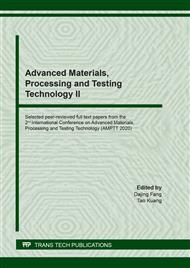p.211
p.216
p.222
p.228
p.234
p.243
p.248
p.254
p.264
Preparation and Mechanical Properties Analysis of Aviation Mechanical Carbon Fiber Reinforced Plastics
Abstract:
The study aims to explore the preparation of aviation mechanical carbon fiber reinforced plastics (CFRP) and the properties of CFRP composites. Taking the aero box body as an example, the mechanical properties of CFRP are studied. The preparation of CFRP is analyzed by searching the data. CFRP plates are explored according to the stress analysis of composite materials. The finite element analysis software ANSYS Workbench and UG software are adopted to build the 3D model of the aero box body. After adding materials in ANSYS Workbench and simplifying the UG model, the finite element analysis of the model is carried out by computer. The 3D model of the aero box is constructed, the finite element analysis of the aero box is carried out, and the mechanical properties of CFRP are explored. In this study, the possibility of the practical application of CFRP in the aviation box body lightweight is clarified, which gives a direction for the subsequent actual molding and guides the application of CFRP in aviation field.
Info:
Periodical:
Pages:
234-239
Citation:
Online since:
January 2021
Authors:
Price:
Сopyright:
© 2021 Trans Tech Publications Ltd. All Rights Reserved
Share:
Citation:


